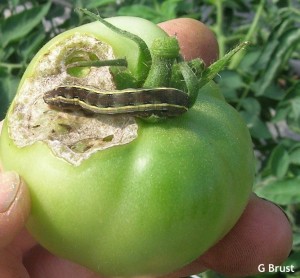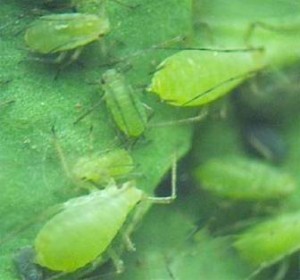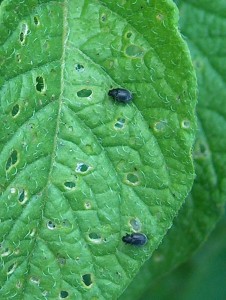The advent of summer brings many positives: vacations, warm weather, and a new found appreciation of karaoke bars. It also brings negatives: Hangovers, sunburns, long car rides, and most of all, bugs. These summer delights infiltrate every aspect of human life. Ants create colonies in sink drains, roaches wait for the lights to dampen, and aphids suck the life out of that prized heirloom tomato that would have won first prize at the state fair.

Gardeners, more than any breed of hobbyist, fear the season of the bad bug. A seasoned dirt worshipper knows the difference between the beneficial bugs (which we will discuss in some upcoming posts) and the nefarious bugs which will take every leaf if allowed.
Dig It can’t cover every bug (consult The Organic Gardener’s Handbook of Natural Pest and Disease Control for more in depth identification and control), but we give attention to some of the more popular thieves of the edibles and how to control their greedy appetites.
Torture is optional.
Aphids
The Lowdown: There are over 4,400 aphid species and everyone of them (literally) suck. They pierce the leaves and suck out copious amounts of precious plant sap. This can distort leaves, cause flowers to drop, and even attract disease. The honeydew that aphids secrete can attract molds and worst of all, ants. The ants can’t resist the sweet honeydew and will even go so far as to transport the aphid up to a favored leaf. They’ll even protect the aphids from predators like ladybug larva.
Biological Control: There are plenty bugs for hire–ladybugs, lacewings, parasitic wasps– that can control aphid populations. One of the better companies for beneficial bug hire is Nature’s Control (which can be ordered directly through Fifth Season). You can also plant beneficial attractants like dill, yarrow, catnip, etc. to attract these aphid assassins. Other plants like mint, marigolds, and basil secrete smells that repel aphids.
Organic Insecticidal Control: Neem oil can be a great preventative, but one must spray on a regular basis to keep the aphids at bay. Potassium Salts of Fatty Acids (found in Safer Insect Killing Soap) has proven effective on some species. The last resort would be Pyrethrins (derived naturally from the chrysanthemum flower and found in products like Pyganic). Although Pyrethrins kill on contact, it will also kill everything else (insect-wise) in the garden if the bug is present at the time of the spray.
Flea Beetles
The Lowdown: These wonderful plant annihilators can both jump and fly. Adults feed externally on leaves, stems, and petals. The larva love roots and are born in the soil twice a year. Eggplant seems to be highly susceptible.
Biological Control: Onions and garlic plants (and sprays made from them) repel flea beetles. Catnip and mint also deter the pests: you can either plant them near the target plant, or surround it with crushed leaves of catnip and mint. Crushed tomato leaves have also been documented as effective.
Organic Insecticidal Control: Sprinkle diatomaceous earth (food grade) on the leaves and the base of the plant. The fossilized diatom are like microscopic razor blades that will shred the beetles. Spinosad ( found in Monterey Garden Spray) is a bacteria that attacks the nervous system of the insect. Yellow sticky sensor cards can be hung every 10-15 feet near the target plant. While the cards won’t wipe out the flea beetle population, it will certainly control it.
To be continued:
Next we discuss the slime ball factor of slugs, pick on potato beetles, and use a hypodermic as a weapon against squash vine borers.



Leave a Reply